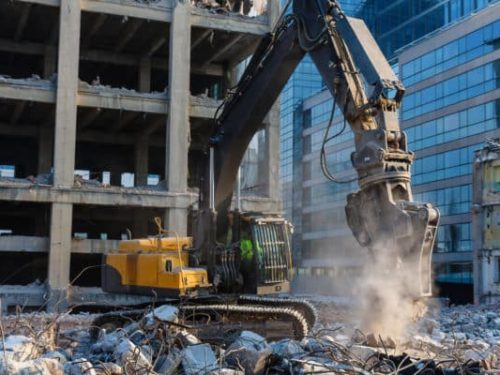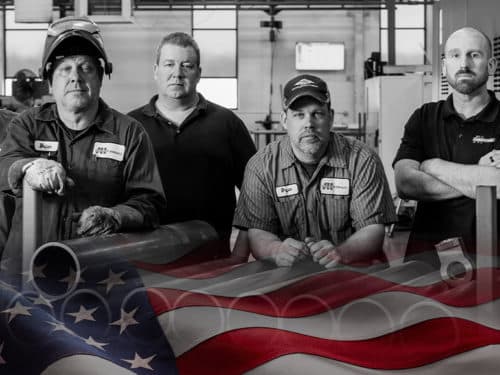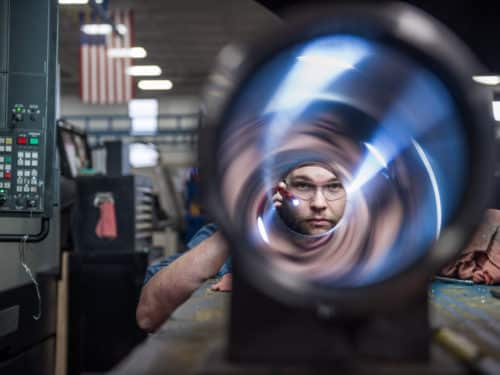Hydraulic cylinders are critical in countless applications. When cylinders fail, quick repairs are imperative to minimize costly downtime. However, assessing hydraulic cylinder damage and determining whether the cylinder requires repair or replacement is not as straightforward as it seems.
Assessing Hydraulic Cylinder Damage
Understanding and identifying the symptoms is the first step in diagnosing hydraulic cylinder failure. Is the cylinder not meeting performance expectations in your application, or is it stalled completely? Is the cylinder leaking oil? Is the cylinder physically damaged?
What complicates the process is that hydraulic cylinder damage can occur in the seals, pistons, head glands, bushings, or mounts. Issues like system contamination can also affect performance and cause cylinder failure. Your first step in identifying the cause is disassembling the hydraulic cylinder and inspecting each part. After conducting a thorough assessment, you can figure out whether hydraulic cylinder replacement or repair is required.
Depending on the location and severity of the hydraulic cylinder damage, it may be more cost-effective to replace the hydraulic cylinder assembly. Most cylinders can be repaired economically if the damage is limited to the seals, head glands, pistons, bushings, or removable mounts.
If rod assembly or barrel assembly replacement is required, especially on smaller assemblies made in a high-volume production environment, the cylinder will likely be classified as beyond economical repair.
Seal Damage
Hydraulic cylinder seal failures generally allow for an economical repair solution. If the internal components of the cylinder are in good working order and there’s no external damage, a trained technician can disassemble and reseal the cylinder for a fraction of the cost of a new assembly.
Damage to Pistons, Head Glands, Removable Mounts, And Bushings
These repairs can be more economical if they are limited to replacing one or two of the components on an assembly. If all of these components need replacing to bring the assembly back to its normal condition, then complete cylinder replacement is usually the best option.
Looking for Oil Leaks in Your Hydraulic Cylinder
Oil leaks are another common cause of hydraulic cylinder failure. Once you determine the exact leak point, you can begin diagnosing the cause of the leak.
In most mobile welded style cylinders, the seals that contain oil from the atmosphere are limited to the head gland of the assembly. In a typical one-piece cylinder head gland, you have two seals: A static seal around the outside diameter of the gland, and a dynamic seal designed to seal against the moving surface of the cylinder rod.
Static seal failures are not very common in the field but could result from exceeding manufacturer pressure or temperature ratings. This type of leak failure appears either around the OD of the head gland where the gland meets the ID or on the face of the cylinder barrel. Teardown of the assembly and inspection of the static seal will help identify if your hydraulic cylinder failure was temperature or pressure-related.
Dynamic seal failure is more common due to the possibility of contamination ingress from the moving rod. There is also the potential of a compromised rod surface to pass over the seal’s lip and damage it. Removing and inspecting the dynamic seal should indicate which type of leak occurred by the markings left on the seal and where you see the damage.
Hydraulic Cylinder Replacement in Complex Assemblies
The exceptions to the above hydraulic cylinder repair strategy would typically apply to larger and or more complex assemblies. Let’s say a large bore cylinder fails and requires a new piston, head gland, rod assembly, and seals. Replacing those components and repairing the assembly may be a more economical solution overall. This could be due to the cost associated with the barrel assembly.
Consider the Downtime Associated with Hydraulic Cylinder Repairs
Even in cases when hydraulic cylinder repair seems more economical than complete replacement, you should always consider the lead time. The longer you have to wait for parts and repairs, the longer the machine downtime. In some cases, a machine sitting idle waiting on a repair could be much more costly than procuring a replacement hydraulic cylinder assembly.
While it’s impossible to fully avoid hydraulic cylinder replacement or repair, performing annual maintenance and using high-quality cylinders can prevent many issues—and help you catch small things before they become big problems.
Get Better, More Reliable Performance with Purpose-Built™ Hydraulic Cylinders
We think the easiest way to guarantee a high-quality cylinder is to choose one that is built for your machinery and industry. A Purpose-Built™ cylinder means you won’t have to worry if the right materials, dimensions, or finish were used. You’ll know you have exactly the right cylinder for the job.
At Aggressive Hydraulics, we build quality into everything we do and are committed to customer service and support. Are you interested in learning more about how using high-quality hydraulic cylinders can extend the life of your equipment? You can contact us online, or call us with your questions at 866.406.4100. We’d love to work with you to create the perfect cylinder for your needs, or help you maintain your existing parts.


